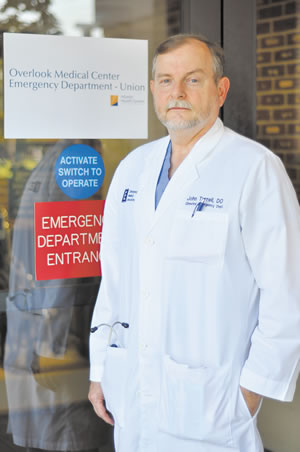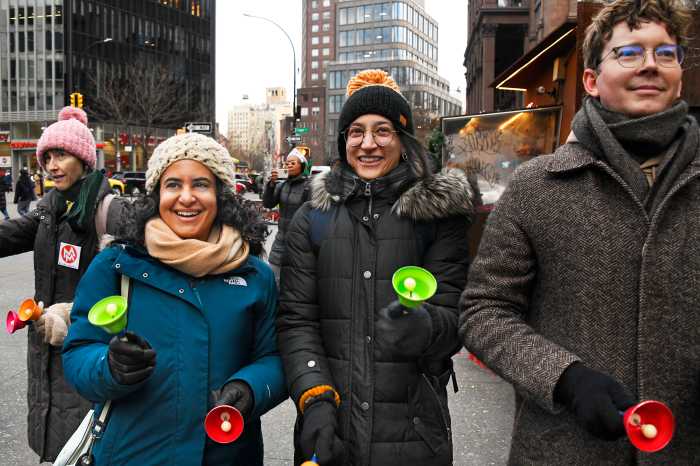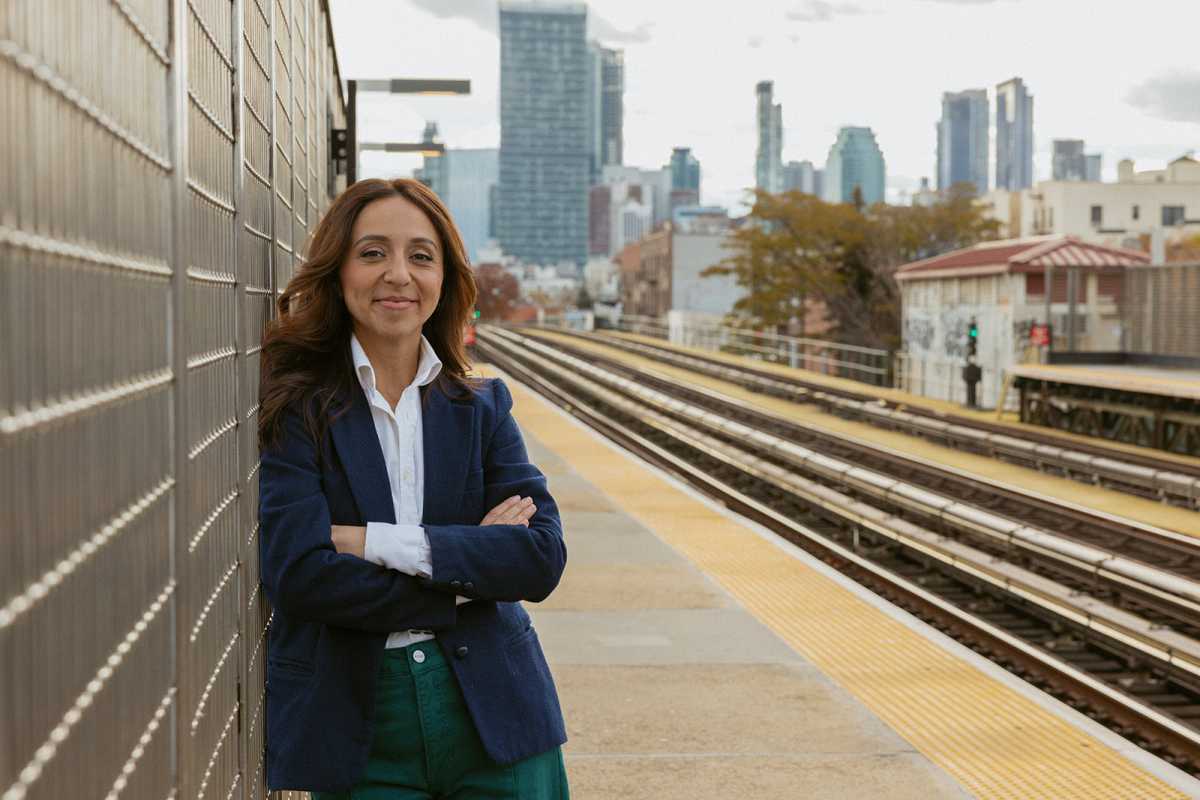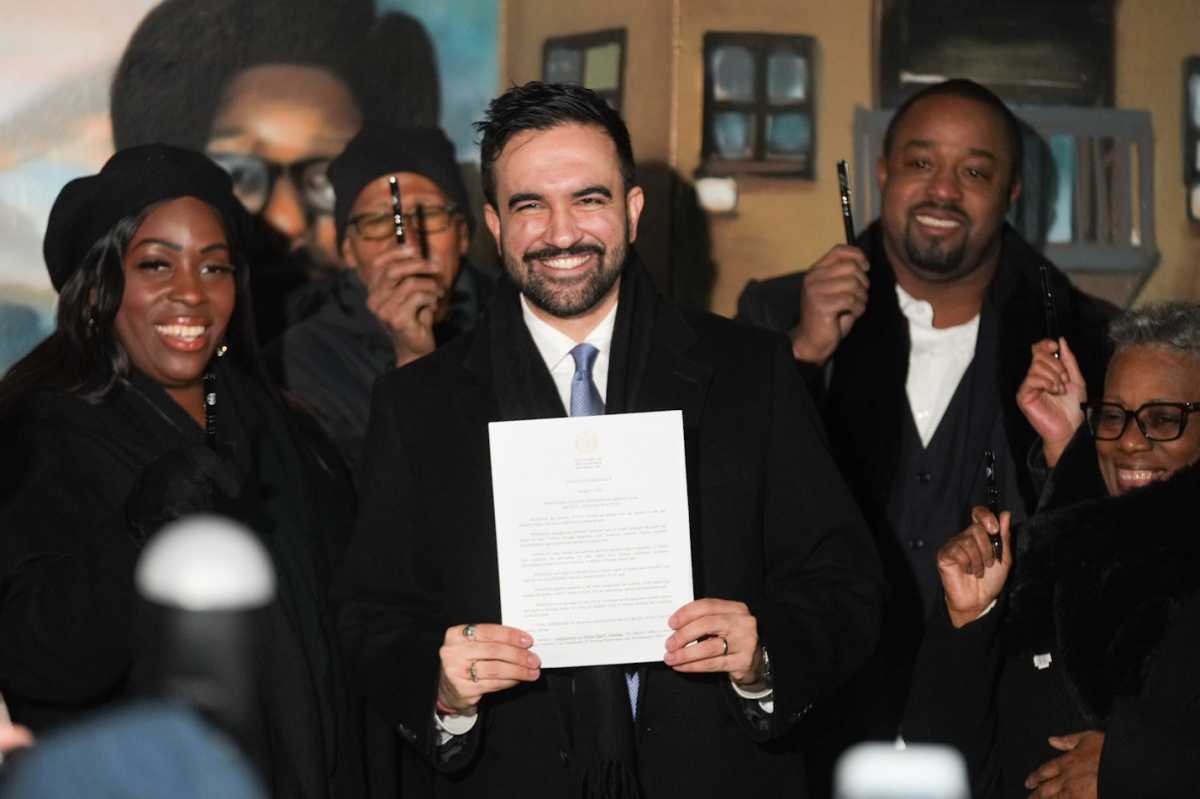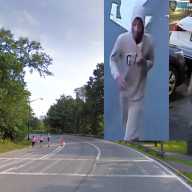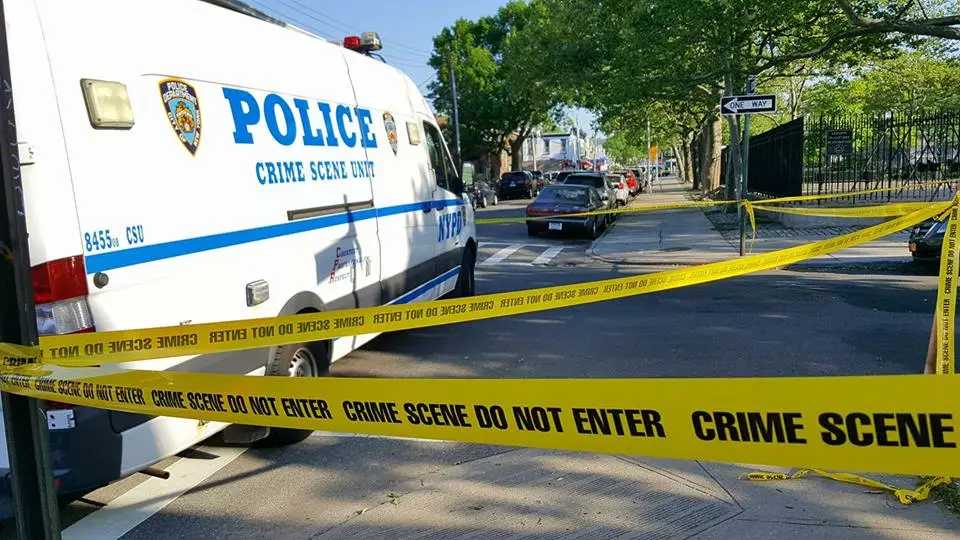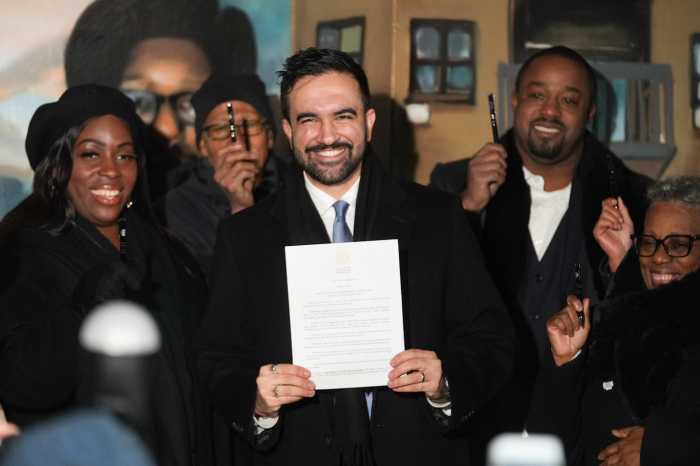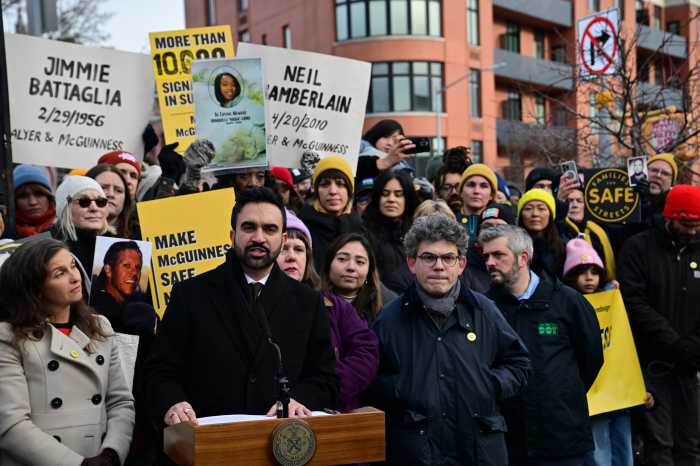By Lincoln Anderson
Just across the Hudson, a model for the Village’s healthcare future
In Greenwich Village a furious debate continues to rage over a plan by North Shore-Long Island Jewish Health System to create a $110 million, 24-hour, emergency department and comprehensive care center at 12th St. and Sixth Ave. Sited in the former St. Vincent’s O’Toole Building, it would be New York City’s first free-standing emergency department.
Similar facilities do exist on a smaller scale in rural communities Upstate, and there are currently more than 200 stand-alone E.D.’s in 22 states around the country.
Given the current state of both healthcare and the economy, for better or worse, these hospital-less emergency rooms may well be the wave of the future.
Yet critics of the North Shore-L.I.J. plan, including members of the Coalition for a New Village Hospital, stridently declare that nothing less than a full-service hospital to replace the former St. Vincent’s Hospital, which closed in April 2010, is acceptable. Some of them, including a couple of former St. Vincent’s doctors, have gone as far as to say that the new stand-alone E.D. won’t save people — but, in fact, will kill them.
Amid the outcry for a replacement hospital, local politicians and Community Board 2 understandably have been reluctant to endorse the North Shore-L.I.J. plan. The issue, which touches a deep emotional nerve, is a political hot potato, to say the least. C.B. 2 is on record supporting the restoration of a full-service hospital.
Meanwhile, across the Hudson River, 19 miles and just a short, half-hour train ride away, a free-standing emergency department is operating around the clock, 365 days a year, in Roselle Park in Union Township, N.J. Known in New Jersey as a “satellite emergency department,” it’s been up and running for close to three years now. And according to Dr. John Tyrrell, the facility’s medical director, they haven’t killed anyone yet — but actually have saved a number of lives.
Referring to one recent dramatic case they had, Tyrrell related, “We had a patient who went into cardiac arrest when he came here. We brought him back — resuscitated him, stabilized him. He came back a few weeks later looking for his watch.”
They didn’t have his watch, but the man was lucky to still have his life. As Tyrrell tells it, the man, in his early 40s, had been working out at a local gym, and was driving in his car when he developed chest pains. He quickly pulled into the Overlook Medical Center Emergency Department at Union and they gave him an E.K.G. A minute or two later, he went into full cardiac arrest. The staff used a defibrillator to bring him back.
“If he had waited and kept driving a few more minutes, he might not have been so lucky,” Tyrrell reflected.
The nurses station at the Union, N.J., emergency department.
Also starting lives
And the Union satellite E.D. also helped start a life when a baby was born there three weeks ago in an emergency delivery. As the doctor tells it, a man was speeding with his wife, who was going into labor, en route to an area hospital at about 10 p.m. A state trooper spotted them and quickly redirected them to the stand-alone E.D. The delivery was successful and the baby was briefly laid in an “infant warmer,” a.k.a. incubator, that the E.D. has on hand for such emergencies.
Technically, birthing babies isn’t one of the satellite E.D.’s normal functions, but if the couple had tried to make it to the hospital, Tyrrell said, the infant likely would have been “delivered on the Garden State Parkway.” It was actually the second baby delivered at the E.D.
Exurban E.d.
Union Township is a leafy, exurban community, home to a middle-class, blue-collar population, with a large Hispanic community and a sizable number of seniors.
The Union emergency department was established on Oct. 1, 2007, and is part of the Atlantic Health System. The 200-bed, acute-care, community hospital that had been at the location, under the umbrella St. Barnabas Hospital System, had shut down, part of a wave of seven hospital closings that swept this area of New Jersey over the past 10 years.
Tyrrell said small community hospitals treating conditions like pneumonia, heart failure and stroke can’t cut it financially, in contrast to larger hospitals offering what he called the big moneymaker — cardiac surgery. Also, he added, “Governor Corzine felt there were too many hospital beds in New Jersey.”
Tyrrell said, at one point, it was being mulled whether to turn the former hospital complex into condos or an assisted-living facility. But it was ultimately decided that a satellite E.D. would help ease the load on local hospital emergency rooms. (The rest of the former hospital is occupied by an unrelated “medical mall” of medical offices, plus a YMCA.)
When the Union satellite E.D. opened, it was seeing about 45 patients a day. Today, it sees, on average, 85 per day. Last year, it treated 27,000 patients, and is on track this year to treat 30,000 patients — the same amount that the E.D. at the full-service hospital there used to see at its peak.
The Union E.D. opened with a staff of 75 and now has about 100. (The North Shore-L.I.J. E.D. and Comprehensive Care Center slated for W. 12th St. is planned to have a staff of 400.)
Dr. Tyrrell with a Telestroke remote stroke checker.
Top doc stayed on
It was a “seamless transition” to a satellite E.D., the doctor said. Part of the reason for that is probably Tyrrell, 54, himself, who has been an emergency doctor for 28 years, much of that time posted at the several hospitals that were successively housed within this same facility. He was given the option of staying on, and did.
The bulk of conditions the facility treats includes chest pains, abdominal pains, asthma and allergies. It also repairs wounds. About 90 percent of the patients the facility sees are “treat and release.”
In general, Tyrrell said, “We don’t get the truly acute patients or the truly sick patients.”
Under guidelines set by the New Jersey Department of Health, the stand-alone emergency department doesn’t normally accept patients requiring advanced life support (A.L.S.) or women more than 20 weeks pregnant. Gunshot-wound victims wouldn’t be brought here.
But that doesn’t mean they haven’t treated individuals with life-threatening conditions when they’ve had to.
“We’re staffed and supplied to handle just about any emergency,” Tyrrell said. “The one thing we can’t do is give blood [which requires storage, a lab and technicians]. We have taken care of patients having heart attacks, strokes.”
Generally, per state guidelines, ambulances won’t bring patients with these types of acute conditions to the Union E.D. Yet, sometimes these patients will arrive as walk-ins, sometimes driven in by family members or friends. The E.D. can evaluate patients, stabilize and treat them, and get them out the door on the way to a hospital within 30 minutes.
If a patient arrives and is suffering an apparent acute heart attack, he or she will, within minutes, be evaluated with an E.K.G. The patient will be given a dose of blood-thinning aspirin and other blood thinners.
“One patient may need nitroglycerin and another might need other medicine,” Tyrrell noted of the blood thinners. “Most get aspirin right off the bat.” (While it might not sound like a powerful treatment, Tyrrell said aspirin’s effect on the blood is immediate.)
Transport to surgery
The catheterization lab at nearby Overlook Medical Center in Summit, N.J.— a full-service hospital — will then be alerted with a “Code STEMI,” meaning a patient is a candidate for a stent or angioplasty. The patient will then be transported to the catheterization lab, a 12-to-15-minute ambulance drive away. Asked if any patients had failed to survive the trip, Tyrrell said, no.
“Knock on wood, we haven’t had any patients die in transport,” he said. “Traffic can be an issue at rush hour,” he admitted. “But, for the most part, when they have their lights and sirens going, they get up there pretty quickly.”
When a patient is having a heart attack, the general rule is that an angioplasty or stent needs to be done within 90 minutes, he explained. This is known as “door-to-balloon time,” the balloon meaning the angioplasty. So far, they’ve mostly been able to achieve that. In some cases, heart-attack patients whom they’ve transported to the hospital have gotten stents put in within 100 to 110 minutes after arrival at the satellite E.D., but Tyrrell said, “That’s not a significant delay.”
The satellite facility sees, on average, one cardiac patient per month requiring transport to the catheterization lab, though this can vary.
“In May we had four — they seem to come in spurts,” the doctor noted.
In addition, he said, “We’re near highways. We see a lot of patients with motor-vehicle injuries.” These auto-accident patients are evaluated and, if necessary, sent to a trauma center or to the main Overlook hospital campus.
Other conditions where patients are evaluated at the free-standing E.D., then transported include appendicitis, bowel obstruction or inflamed gall bladder.
As for stroke patients, usually they can’t walk and so are picked up by an ambulance responding to a 911 call. Ambulances will bring them to the nearest stroke center, such as at the hospital in Summit, bypassing the free-standing E.D. (On the other hand, on average, about 25 percent of those seeking treatment for chest pains won’t call an ambulance and will be walk-ins at emergency rooms.)
Remote stroke check
If, however, a stroke victim is a walk-in patient at the stand-alone E.D. or is brought in by family members, a neurologist can evaluate him or her remotely with what is known as a Telestroke “robot.” Essentially, it’s a computer screen with a couple of cameras and a stethoscope. A “Code Gray” is issued, and a neurologist on the other end — either in a hospital, or outside a hospital via a laptop — views the patient through the cameras.
The neurologist has a joystick and can maneuver the cameras and magnify the image, such as of the patient’s pupil, to check for signs of a stroke. Someone at the free-standing E.D. puts the stethoscope on the patient, so the off-site neurologist can check vital signs. The neurologist will ask the patient to follow certain commands, such as raising an arm, and so forth, to test for facial and physical reactions and for weakness.
The Telestroke evaluation helps the neurologist decide whether TPA, a “clot-busting medicine,” as Tyrrell put it, should be administered to the patient. The current standard is that TPA should be given within four-and-a-half hours after a stroke.
Over all, about 6 percent of the patients the satellite E.D. sees, after evaluation, are admitted to various local hospitals. By contrast, the average hospital admits 15 to 30 percent of its patients.
In general, about 150 to 200 patients are brought by ambulance to the Union E.D. each month, or around five or six per day, totaling about 8 percent of the facility’s patient load.
Careful evaluations
Occasionally, despite protocols, ambulance crews will bring in patients who they are unaware need higher-level care than the free-standing E.D. can offer. For example, Tyrrell noted, a man with a crush injury suffered at work was brought in, and it turned out he had a pelvic fracture that hadn’t been initially apparent. In another case, a man in a motor-vehicle accident, after evaluation, was found to have liver lacerations. Both patients were stabilized at the Union E.D., then transported to a trauma center.
The Union E.D. has CAT scans and X-rays.
If required, the satellite E.D. can provide advanced life support: It has two ventilators — machines used to keep patients breathing artificially — which they’ve had to use only “once in a while,” Tyrrell said. However, the state recommendation is that patients should not spend more than 12 hours at satellite E.D.’s.
Asked if any patients had died at the stand-alone E.D., Tyrrell said there were a couple of times when ambulances dropped off individuals who were “beyond resuscitation,” and that the E.D. took them, “as a service,” so that the ambulances could go back in the field. The individuals were pronounced dead and transported to a morgue or funeral home.
A visit to the E.D.
The Villager got a tour of the Union satellite E.D. during a two-and-half-hour visit, from noon to 12:30 p.m., on Thurs., July 7.
The space looked like a typical emergency department, with nurses manning computers at a central station, ringed by 15 exam rooms for patients to be treated and evaluated. At any given time during the visit, about five to six patients were being treated.
Throughout the two-and-a-half hours, the waiting room was empty. Tyrrell explained that the busy times for emergency rooms are from 5 p.m. to midnight, since people typically work and do whatever else they need to do during the day, then get medical treatment afterward.One man lying on his back on an exam bed had suffered an arm injury in a motor-vehicle accident.
About half an hour into the visit, the sound of a young child loudly wailing could be heard coming from an exam room. Tyrrell checked a computer monitor to see what was logged in about the patient: It was a 15-month-old boy with a burn to the face. Obviously, he was in a lot of pain.
About a half-hour to 40 minutes later, the boy was wheeled out of the E.D. on a gurney to a waiting ambulance. He was sitting up and not crying, looking around alertly, as his mother walked along next to him, sobbing. The boy would likely be admitted to a hospital, Tyrrell said.
Stitches to heart failure
Asked if he’d had any other notable recent patients, Tyrrell thought a second, then said, “I had a 6-year-old boy that needed stitches to close a forehead gash, about 13 to 14 stitches. … I actually transferred someone [to a hospital] last night. He came in for back pain. He was brought here by ambulance at 4 a.m. Once he got here, he was coughing up blood. It turned out he had a combination of pneumonia and heart failure.” The man, 87, was evaluated and stabilized at the satellite E.D. before being transferred. When the elderly man left, “he wasn’t coughing anymore and wasn’t having trouble breathing,” Tyrrell noted.
Working the 10 p.m.-to-7 a.m. shift over the two previous nights, the doctor had seen a total of 41 patients.
In another serious case he recently dealt with, Tyrrell treated a man who had two collapsed lungs from being stabbed in the back. His friend had driven the man to the E.D.
‘Not an urgent-care’
Some critics of the North Shore-L.I.J. free-standing E.D. planned for Greenwich Village have repeatedly dismissed it, inaccurately, as an “urgent-care center” — which offers a significantly lower level of care than an emergency department.
Asked how he’d respond if that charge was made about his own satellite E.D., Tyrrell said, “It’s not an urgent care. It’s a full-service emergency department. The only difference is that when a patient needs to be admitted, they’re put in an ambulance and taken to a hospital, instead of put on a stretcher, rolled down the hall and taken to a bed.”
Also, as opposed to a full hospital, in the event of a major crisis, the E.D. only is stocked with enough supplies to last three days.
The local community has accepted the Union E.D., he said.
“It took a little while for people to get used to it and understand what the capabilities are,” he admitted. “For the most part, I don’t see a lot of difference between what we do now and when it was a critical-care hospital. We’re looked at as an acute emergency room.”
However, he added, “If people are truly ill, they should call 911 and let them determine where they should go.”
Tyrrell added that treatment is usually a lot quicker at the Union E.D. than at hospital emergency rooms.
“We’ve had people wait four hours at another facility, then give up and come here, and were seen here within 30 minutes,” he noted.
But some Villagers fear North Shore-L.I.J.’s free-standing E.R. won’t speed up treatment for seriously ill patients, but will instead delay it — with potentially dire results. Hospital advocates assure there would be deaths as ambulances transporting patients from the E.D. crosstown to East Side hospitals get stuck in rush-hour gridlock.
L.I.J. and its plan
North Shore-L.I.J., in fact, has studied the Union, N.J., satellite E.D. and about a half-dozen similar facilities around the country as models for what it plans to do in Greenwich Village.
In a conference call this week, Jeffrey Kraut, North Shore-L.I.J. senior vice president for strategy, and Dr. Carl Ramsay, chairperson of the department of emergency medicine at Lenox Hill Hospital on the Upper East Side, again explained what the Village facility will and won’t do and why they are confident it will be an asset for the community. (North Shore-L.I.J. recently acquired Lenox Hill.)
In recent news, Kraut added that North Shore-L.I.J. filed a certificate of need for the O’Toole facility on June 30 with the state Department of Health, which still has to approve the project. At some point, there will be a hearing at which the public’s testimony will be solicited. If approved, the gut-rehab and renovation of the existing building will take a year, with the opening sometime in 2013.
They expect the 12th St. facility will see about 30,000 patients per year after about three years, and will annually admit about 1,600 patients to hospitals. It’s anticipated that about half of these admissions will have a doctor at Beth Israel Hospital and have a preference to go there. Others will choose to go to N.Y.U. Medical Center and New York Downtown. If patients have no preference, they’ll be taken to Lenox Hill, they said.
‘State of the art’
“This is going to be twice the size of what St. Vincent’s had operated, and it’s going to be state of the art,” Kraut said of the E.D.
“We run 14 E.D.’s,” he noted of the sprawling North Shore-L.I.J. system. “Last year, we took care of 600,000 people in our E.D.’s. We have 300 emergency doctors.”
In addition to the free-standing E.D., the facility will have an imaging center (with M.R.I., CAT and ultrasound), an ambulatory surgery center and offices for physicians in certain specialties — the types of which are still to be determined.
“We’re going to put the best people in there and provide the best care to the community,” said Ramsay. “Anything less than that, we wouldn’t be doing this.”
While the 12th St. facility won’t offer cardiac surgery, Ramsay noted that only 25 percent of hospitals across the state do.



